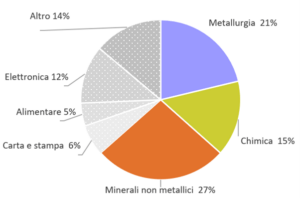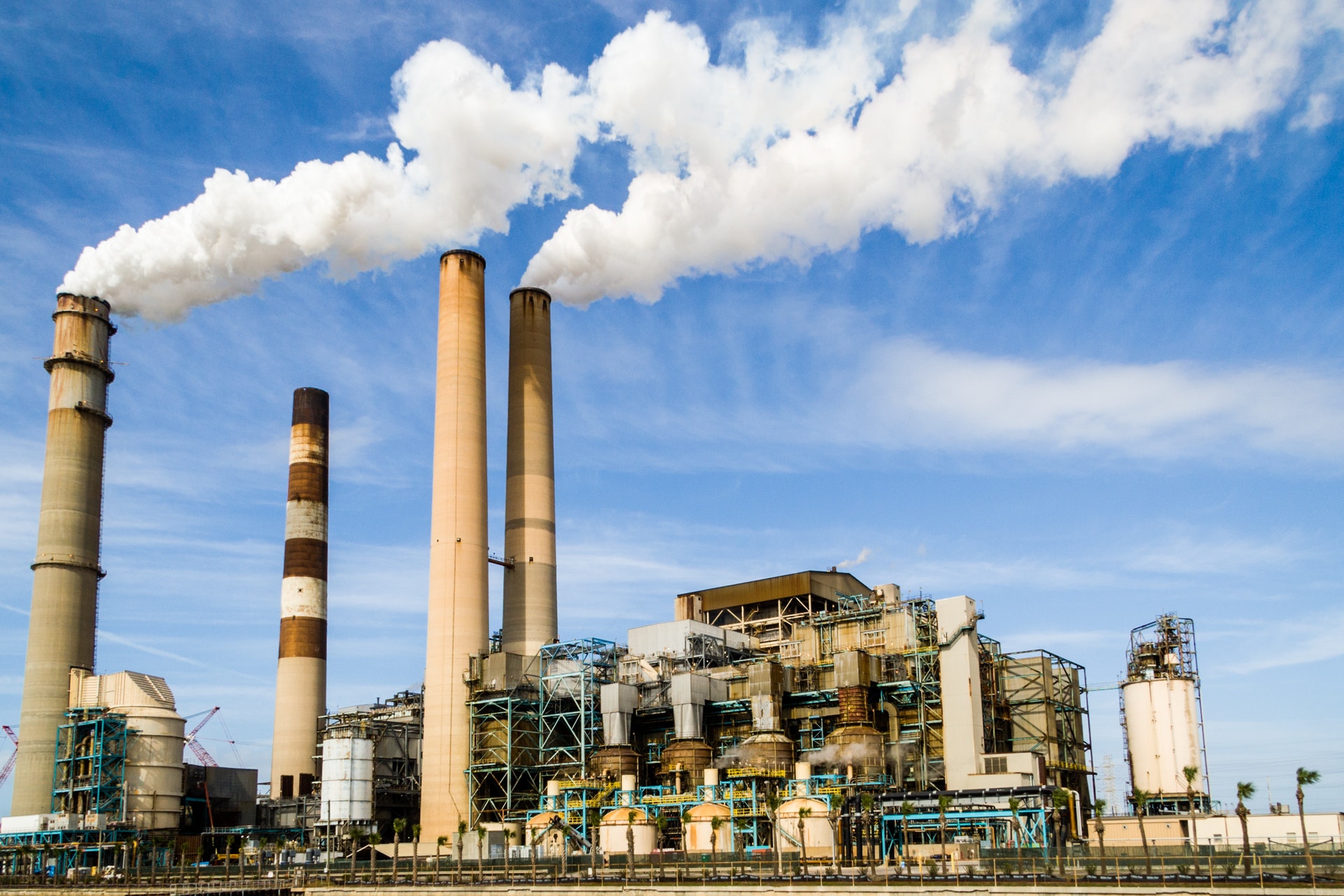The International Energy Agency (IEA) a few days ago underscored the need for a concrete decarbonization strategy for heavy industry, highlighting the centrality of the public sector in guiding policy guidance and investment support.
The IEA sends this message through its report “Achieving Net Zero Heavy Industry Sectors in G7 Members,” released last May, in which it proposes ten recommendations for rapidly reducing CO2 emissions from heavy industry in G7 countries.
Let’s analyze some data. G7 countries contribute 17 percent of the world’s steel production, account for 8 percent of cement production, and 28 percent of chemicals. The heavy industry sectors are responsible for the consumption of more than 15 percent of coal and about 10 percent of the total oil and natural gas used in the G7 countries. Focusing on Italy, our country is the second-largest steel producer in Europe and 11th in the world, the third-largest chemical producer in Europe and 12th in the world, and the second-largest cement producer in Europe. Sixty-three percent of domestic industrial emissions come from the hard-to-abate sectors, so defined because they have greater difficulty in abating their greenhouse gas emissions, as they require heat at high temperatures and because CO2 is also emitted during the chemical reactions that occur in the production process (Figure 1).

Figure 1 – Direct emissions of Italian industry in 2020 by sector. Total: 74.8 Mt CO2eq.
In heavy industry there are still few innovative solutions that have reached sufficient levels of technological and commercial maturity, and new production processes are generally characterized by very expensive investments and operating costs. Products such as steel and cement are traded internationally in markets characterized by high supply-side competition, with margins too small to absorb a major increase in production costs. Critical elements, those mentioned above, that are hampering business investment in new technologies to reduce emissions.
An ambitious and well-defined policy framework is essential to create the conditions for rapid decarbonization of heavy industry. The strategies that will be developed over the next five years will be key to steering these industries on a path compatible with achieving climate neutrality goals. The IEA report proposes 10 recommendations for G7 countries to accelerate the transition and, at the same time, enable industries to remain dynamic, competitive and generators of high-quality jobs:
1. Develop long-term action plans for industry. As ECCO argued in the policy paper “Climate and Development: an industrial strategy,” guiding manufacturing sectors, value and supply chains, and public and private finance toward innovative zero-emission projects is essential to direct investments toward meeting climate goals. Such a strategy will need to increase resilience against international price volatility, reduce dependence on fossil imports, and enable the sector to remain internationally competitive. For this industrial policy to benefit the economy and create jobs, it is crucial that it has a medium- to long-term time horizon. Industrial plans cannot look at a time frame of one or two years, but must project business into the future to anticipate market trends, maintain competitive advantages, and avoid lock-in in investments that are not fully compatible with decarbonization goals;
2. Fund pilot projects for the development of near-zero technologies. Public support should be a stimulus for technological innovation and sustainability and should help reduce the risks associated with the adoption of innovative technologies. For example, in Italy the state could support a project at the ex-Ilva plant in Taranto to develop Direct Reduced Iron (DRI) technology for green steel production. The IEA defines this technological solution as the way forward for the production of primary green steel in the G7 countries, and it is recalled, among other things, that it is precisely to this technology that an investment is also dedicated within the National Recovery and Resilience Plan (PNRR)
You can read our report, “Taranto, primary steel production in the decarbonization challenge” here
3. Develop financing mechanisms to support the deployment of near zero technologies and related infrastructure, such as renewable electricity and green hydrogen production and distribution. The goal of climate neutrality to 2035 for the electricity system is foundation for decarbonization of both industries that require high-temperature heat, enabling production of the necessary amount of green hydrogen, and those that require medium- and low-temperature heat, achievable through electrification;
4. Creating markets for near zero materials. To enable companies to invest in low-carbon technologies, it is necessary to create a robust demand for green products. In this regard, policies are needed to stimulate demand for these products by first leveraging the public sector and encouraging the same behavior in the private sector, including through appropriate tax policies. For example, in the case of the steel industry, public procurement can create an outlet for green steel in the infrastructure and building sectors. Also with reference to steel, there are industrial partnerships in the automotive sectors, such as those between SSAB and Volvo or such as those being signed by H2 Green Steel with Mercedes and Schaeffler, which could also be promoted in the electromechanical, shipbuilding, railroad, construction, and packaging sectors. Such partnerships could be guaranteed by the state with instruments such as, for example, contracts for difference, so that the buyer can purchase green steel at a price that is competitive with that of steel from coal-fired blast furnaces. The cost surplus would be paid to the producer by the state;
5. Create an international alliance to support industrial transition. A broad-based alliance, preferably international in scope and promoted by the G7 countries, would make it possible to coordinate the implementation of mechanisms that can accelerate the decarbonization of heavy industry;
6. Place the decarbonization of the cement sector at the center of the COP27 international climate dialogues. This is a particularly complex sector in terms of decarbonization because about 60 percent of emissions are process emissions, that is, they are generated by chemical reactions that occur during the production process. Replacing fossil fuels with zero-emission fuels (such as green hydrogen) has no impact on these types of emissions. It is therefore necessary to analyze other solutions, such as using different feedstocks or adopting techniques for CO2 sequestration;
7. Consolidate shared standards for quantifying emissions. G7 member countries should agree on a set of criteria and standards for assessing the emissions of each material;
8. Adopt emission thresholds that allow near-zero products to be clearly identified. Identifying threshold emission factors makes it possible to identify which products and materials can be identified as “green” and which cannot, putting a brake on greenwashing;
9. Develop intermediate steps to reduce greenhouse gas emissions. While medium- to long-term goals in terms of decarbonization are important, it is crucial that any plan to reduce emissions include intermediate steps that allow the effectiveness of the path taken to be evaluated. In particular, measures need to be developed for EU economies to achieve both the long-term and intermediate targets identified in the European Fit for 55 package;
10. Extend the work on the identification of standards, norms and emission thresholds to the entire value chain, from raw material sourcing to end-of-life products. For this purpose, a useful tool is the Life Cycle Assessment (LCA), a methodology for estimating the environmental and climate impact of products and services, which considers the entire life cycle, from raw material sourcing to end-of-life.
More advanced economies have both a responsibility and an opportunity to take a leadership role in driving forward the transformation of heavy industry sectors. G7 countries can and should leverage and inspire industry transition in other areas of the world as well.
Italy, as a G7 and G20 member and as a heavily manufacturing economy, is faced with the need to adopt clear and sector-specific industrial plans that bring together decarbonization and economic development goals. Only in this way can competitive advantages be maintained while driving innovation toward low-carbon technologies and processes, avoiding investment in technologies that will cease to be competitive in the short term, and phasing out, but rapidly, the use of all fossil fuels. Only in this way can decarbonization and economic development go hand in hand, as the International Energy Agency suggests.
Photo by Pixabay







